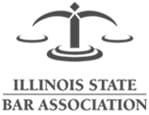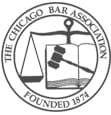The National Transportation Safety Board and National Highway Traffic Safety Administration have each sent a team to investigate the recent crash of a Tesla Model S electric car that was on “Autopilot.” While neither would comment in detail about the pending investigation, it is likely they want to understand the role the Autopilot system played in the frightening wreck.
According to Bloomberg, the Model S was traveling at approximately 65 mph when it struck the back of a fire truck that was parked in the roadway. The fire crew was assisting at another crash site.
“Amazingly there were no injuries! Please stay alert while driving!” tweeted a union for the firefighters, who work in Culver City, California.
Indeed, the Tesla driver should have remained alert. Tesla’s Autopilot is not intended to replace drivers but is only considered an “advanced driver assistance system” — cruise control with some extra features. Tesla says the feature is “intended for use only with a fully attentive driver” who is ready to take over at the first sign of trouble.
This was at least the second accident in which a driver misused the system, however. In May 2016, a Model S driver was apparently not paying attention to the road because he had the Autopilot system engaged. The system failed to detect a semi-truck that pulled out into the Tesla’s path and the driver was killed when the car drove underneath the trailer.
In the 2016 crash, the NTSB said that the Autopilot system played a major role. However, it laid the final blame on the driver who over-relied on his technology and turned his attention away from the road.
In the California crash, the NTSB is likely to come to a similar conclusion about fault. However, it and NHTSA will seek to determine why the Autopilot system failed to detect a parked fire truck in its path. Moreover, the agencies will want to know why the system was operational when the driver was not paying attention, as he allegedly has said he was not.
The NTSB has previously criticized the methods these systems use to determine if the driver is attentive. The systems ideally would not operate without continual input from a driver, such as applying torque to the steering wheel or passing head-position sensor tests.
On a scale of 0 to 5 with 5 being fully autonomous, the Tesla Autopilot system rates a 2. That means it should only be used on Interstates, where there are no intersections. Drivers should continuously monitor the road and the vehicle’s performance and be ready to take over immediately, if necessary.










